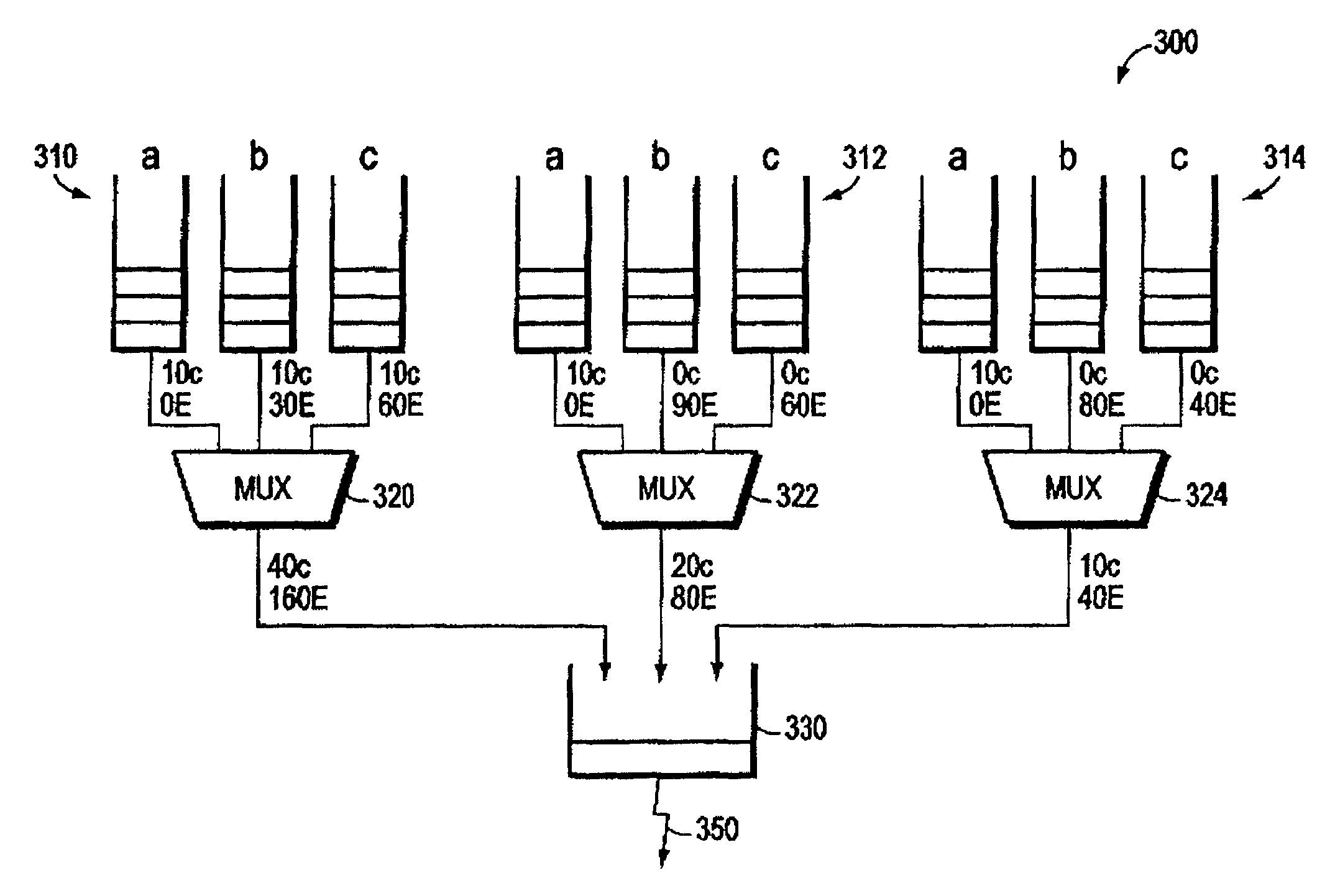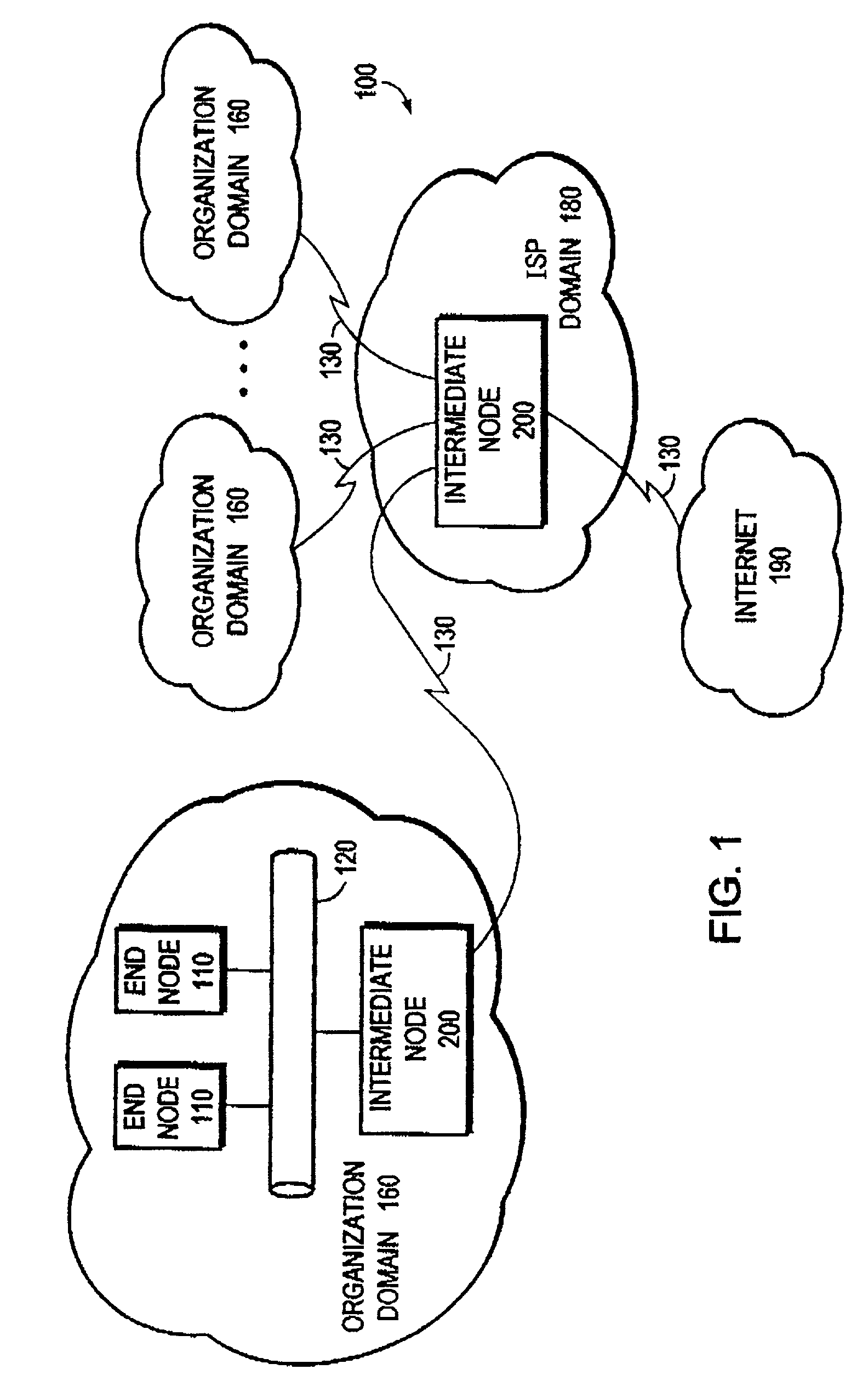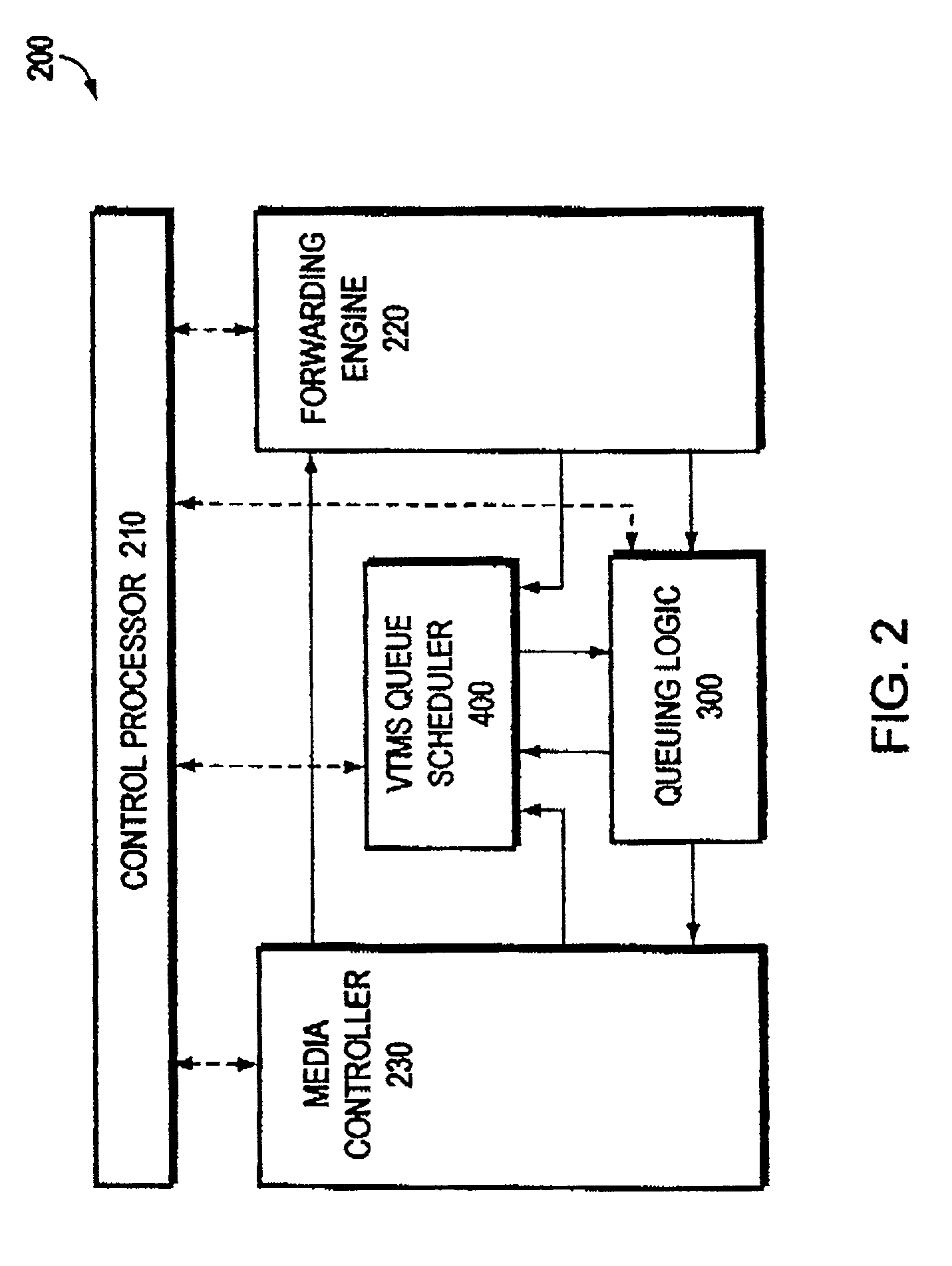Flexible, high performance support for QoS on an arbitrary number of queues
- Summary
- Abstract
- Description
- Claims
- Application Information
AI Technical Summary
Benefits of technology
Problems solved by technology
Method used
Image
Examples
Embodiment Construction
[0028]FIG. 1 is a schematic block diagram of a computer network 100 comprising a collection of network links and segments connected to a plurality of nodes, such as end nodes 110 and intermediate nodes 200. Each node generally comprises a central processing unit (CPU), a memory unit and an input / output (I / O) unit interconnected by a system bus. The memory unit may comprise storage locations typically composed of random access memory devices, which are addressable by the CPU and the I / O unit. An operating system, portions of which are typically resident in memory and executed by the CPU, functionally organizes the node by, inter alia, invoking network operations and supportive application programs executing on the CPU. It will be apparent to those skilled in the art that other processor and memory means, including various computer readable media, may be used for storing and executing program instructions pertaining to the inventive process described herein.
[0029]The network links and...
PUM
 Login to View More
Login to View More Abstract
Description
Claims
Application Information
 Login to View More
Login to View More - R&D
- Intellectual Property
- Life Sciences
- Materials
- Tech Scout
- Unparalleled Data Quality
- Higher Quality Content
- 60% Fewer Hallucinations
Browse by: Latest US Patents, China's latest patents, Technical Efficacy Thesaurus, Application Domain, Technology Topic, Popular Technical Reports.
© 2025 PatSnap. All rights reserved.Legal|Privacy policy|Modern Slavery Act Transparency Statement|Sitemap|About US| Contact US: help@patsnap.com



